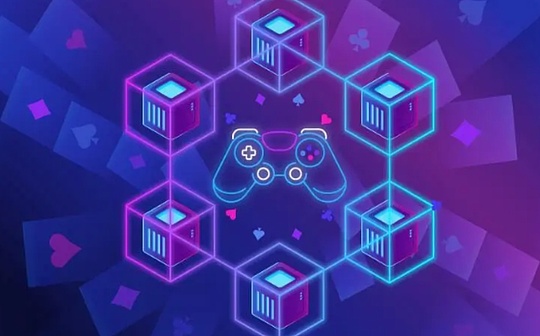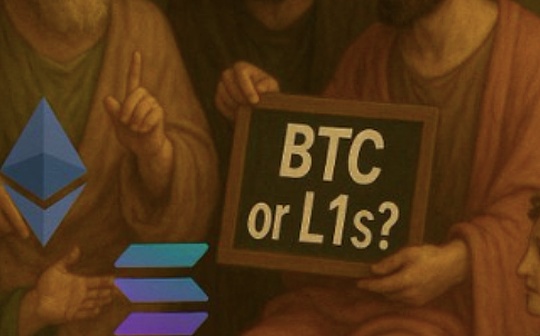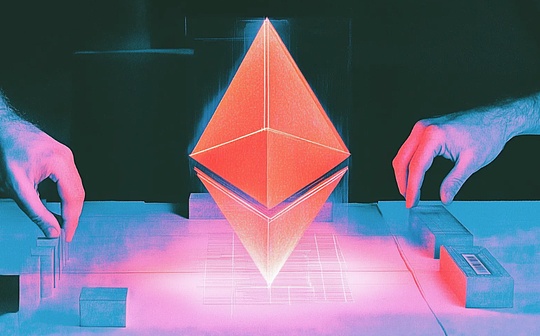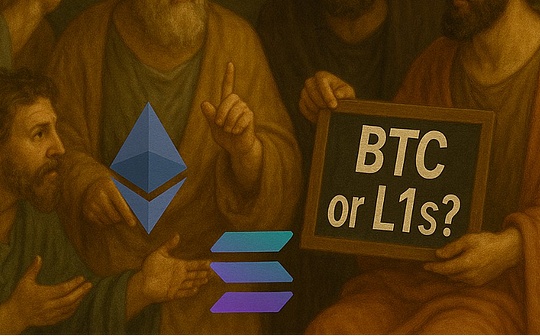
Author: Captainz, Gametaversedao Researcher Source: X,@hicaptainz
2023 All -Chain Game Development Introduction
The game on the full -chain has made very significant progress in 2023, which has attracted everyone’s attention.We think there are the following reasons,
-
Jump Crypto clarified the connotation and extension of the concept of the full -chain game at the beginning of the year, making it clearly distinguish between the two chain game and GameFi two chain travel tracks.
-
The game engine of the ECS architecture began to appear at the beginning of the year, making it more convenient to establish complex applications on the chain.
-
The emergence of Ticking Chain has made the logical frame refresh rate of all -chain games leap in qualitatively, so that the type of the full -chain game has expanded from the round system to the instant strategy class that requires a high refresh rate.
-
The popularization of AA wallets in 2023 can greatly improve the operation experience of the full -chain game. From then on, there is no need to sign the signature authorization of each step on the chain.
-
With the rapid development of ZK-Rollup, ZK technology helps all-chain games expand from a game symmetrical game to “asymmetric information game”.
-
Autonomous Worlds, the narrative, exuded from the geek layer to the VC circle, is mainly due to the two relatively large industry events. The first is in May ETHGLOBAL and 0xparc and Lattice called “Autonomous WorldsHackathon “online hacker pine.The other is an offline meeting called “Autonomous Worlds Assembly” held in Istanbul in November.
-
More than a dozen full -chain games entered the test network in 2023, which preliminarily displayed playability.
-
In 2023, the blockchain infrastructure is increasingly rolled on Layer’s 2nd. Application layers such as financial and social lack of sufficient innovation, so the full -chain game track that meets the “Crypto Native” has become the leader of the application layer narrative.
-
Entity: In ECS mode, entity is an abstract concept. It does not directly hold data, but is associated with components.The entity can be regarded as a container of one or more components. Its main function is to provide a unique identification for components.
-
Component: The component is the carrier of the data.In the ECS mode, all data is encapsulated in the component.Each component represents a specific attribute or behavior, such as location, speed, color, etc.The component contains only data and does not contain any logic or behavior.
-
System (System): The system is where the data is processed.The system will determine how to deal with these entities based on the component of the entity.Each system has one or more specific tasks, such as rendering, physical simulation, AI logic, etc.
-
Performability: By combining different components, you can create entities with various attributes and behaviors without creating a large number of classes or structures.
-
Locality of data: Since the component contains only data, the relevant data can be stored closely together to improve the cache utilization rate, thereby improving performance.
-
Repeatability: The system only cares about data and does not care about which entity from the data, so the same system can be reused between multiple entities.
-
Parallelism: Due to the separation of data and behavior, the parallel processing of data in multi -threaded environment becomes easier.
Although Jump Crypto (@jump_) also proposed an ARC (Action Registry Core) game engine at the same time, we believe that the architecture is only a variant of the ECS architecture and has many limitations. ThereforeThe full -chain game engine architecture uses an ECS architecture. -
Strict narrative boundary: This means that the world has a set of fixed and immutable benchmark rules.They do not change with time or situation, providing a stability for the world.
-
Formal introduction rules: This indicates that there is a clear and fixed rule in entering and participating in this world.These rules include how to become part of this world and how to interact in it.
-
There is no need for privileges to maintain its existence: this world is self -maintained and does not depend on any specific individual or organization to maintain or manage.
In the concept of Autonomous World, the world does not specifically refers to human life, but a container, a place to accommodate rules and narratives.To be more rigorous, the concept of the full -chain game and the autonomous world is not completely equivalent. All autonomous worlds are all -chain games, but not all full -chain games are the autonomous world.When the ground expands, it becomes the autonomous world. -
The game engine ARGUS Labs completes 10 million US dollars seed round financing, HAUN Ventures led, Elad Gil, Balaji Srinivasan, SIQI Chen, KEVIN ALUWI, Sunny Agarwal, Calvin Liu, Scott Moore, Robot Ventures, Anagram and Dispersion Capital.
-
The game engine Curio Research completes 2.9 million US dollars of seed round financing, Bain Capital Crypto led, TCG Crypto, Zonff Partners, Formless Capital, SMRTI LAB, Robot Ventures and many angel investors.
-
The game engine Paima Studios has obtained $ 1.4 million from Cardano. The Paima code is available on Github, allowing the creation of chain games related to NFT, where the game status can be associated with NFTS.
-
The blockchain game startup PROOF of Play founded by Farmville co -founder Amitt Mahajan completed the $ 33 million seed round financing. A16Z and Greenoaks jointly led. Participants include Mercury, Firebase, Zynga, and Alchemy. Individual investors include Ravikant, and personal investors.Balaji Srinivasan, Twitch founders Justin Kan and Emmett Shear.Proof of Play aims to create interesting and easy to use blockchain games. The first social role -playing game named “Pirate Nation” released a test version in December last year. Players can fight, produce, trade, and trading and trading and trading.Explore, look for digital tokens marked with PGLD.
-
The full -chain game Citadel announced in November that it had completed a $ 3.3 million seed round financing, and 1KX led the investment. Shima Capital, Hashed, MatchBox Dao, Ready Player DAO, etc. participated in the investment.
The following will be explained from infrastructure, narrative logic, full -chain game, and industry financing.
Infrastructure
We believe that the infrastructure of all -chain games is the game engine, Ticking Chain, a ZKP -based information hidden system and AA account.
>
Game engine
Game engine is a software framework for the development and creation of video games.It includes many core functions required for game development. For traditional web2 games, it generally includes such as rendering engines, audio processing, physical simulation and animation systems.By using a game engine, developers can focus on game design and creativity, without having to build the entire technical infrastructure from scratch.The game engine provides a fast and effective tool for game developers to reduce development costs and time.
>
For the game on the full -chain, it is also necessary to help developers to quickly deploy game logic.This can not only shorten the development cycle, but also provide a unified data standard for subsequent iteration development and interoperability in open ecology.If we regard the blockchain system as a distributed database, how to store and read data in the game highly in this distributed database, build a large smart contract, and synchronize with the front -end status in a timely manner is not easy.What happened.The full -chain game engine of the ECS architecture came into being.
ECS (entity -component -system) is essentially a modeling method of data structure. Its core is how to store and organize data.
>
It separates data (components) from behavioral (system) to make the data storage and processing more flexible and efficient.The advantage of this architecture is:
MUD: Lattice (@latticexyz) MUD is the longest and well -known full -chain game engine in the Web3 field. In the previous first -generation version, it clearly stated that MUDV1 was a framework based on ECS. Lattice announced in the middle of the year.The V2 version has made great changes to the overall architecture of the MUD. MUDV2 includes: Store (a database on a chain), World (a entrance point framework, providing standardized access control, upgrade and modules), fast development tools based on Foundry, can be ableClient data storage reflects the status of the chain, and MODE (a postgres database that can use SQL to query and reflect your chain status).At the end of the year, MUD introduced its own Layer2 Rollup (based on OP Stack), named Red Stone.MUD is currently only suitable for EVM compatible chains.
Dojo: In addition to Solidity on the full -chain game, StarkNet’s cairo is also a common language.However, MUD cannot be well compatible with cairo.Therefore, the founders of the two active projects of the StarkNet ecosystem of Realms and BRIQ FORK MUD, jointly developed the CAIRO -based engine DOJO (@ohayo_dojo).
World Engine: ARGUS (@Arguslabs_) The rollup framework designed for the full -chain game.World Engine is divided into two key parts.The first part is the core, consisting of two key elements: EVM Base Shard, a hybrid execution layer and sorter that supports shards, and Game Shard, a high -performance game engine and execution layer.In addition, there are some peripheral components, such as transaction relay and network code for client -server communication, and ZK Cloud proofs for ZK games like Dark Forest.In simple terms, World Engine also uses an ECS architecture, comes with an EVM compatible Layer2 chain, and the chain can achieve high -efficiency automatic “logical frames” refresh.
KeyStone: Curio (@0xcurio) opened the KEYSTONE in May, a L2 chain built into the L2 chain of the game Tick and ECS all -chain game engine, which is based on OP Stack.Compared to writing ECS status through smart contracts, this design allows all ECS operations (such as query and status settings) to have faster performance.By customized pre -compilation, smart contracts can access the ECS chain status of the bottom layer.Game logic can be written in Go language, not solidity, which can be parallelized in large scale.
Other chains also have different all -chain game engines based on the ECS architecture, such as Obelisk (@0xobeliskLabs) based on MOVE language, Bolt (@magicBlock) based on Solana, and so on.
Ticking chain
Traditional games are based on loop-based, because their core operating mechanism is the game cycle.The game cycle is a continuous process, which usually includes the steps of processing user input, updating the status of the game, and rendering the game world.This cycle continues during the operation of the game, usually running dozens to hundreds of times per second to maintain the smoothness of the game world.In this architecture, the game system (such as physical engines, AI systems, etc.) checks and handle the game entities and components they care about in each cycle.
However, the architecture of the blockchain is based on Push-Based.Blockchain is a distributed database that shares and store information through nodes in the network.When a node generates a new transaction (such as transfer, contract calls, etc.), the transaction will be pushed to the network, and other nodes will verify it and add it to the blockchain after receiving the transaction.This is a passive process. The node does not take the initiative to find new transactions, but is waiting for other nodes in the network to send new transactions.Therefore, the architecture of the blockchain is called push.
In traditional web2 games, the execution of the game loop function is also called “logical frame”, which can be integrated in the game back -end server, or it can be set as a “heartbeat server” separately.In the full -chain game, the synchronization of logic frames is generally active game cycle through “Lazy Update” and “Manual Ticking”.The disadvantage of this is that the refresh rate of logical frames is relatively low, and the GAS cost is higher.@Therealbytes can achieve high -efficiency and automated logical frame synchronization by compiling the circulating function to the chain node.
The representatives in it are World Engine and Keystone. They have achieved integrating the Ticking Chain function into the ECS architecture, thereby increasing the synchronization rate of the full -chain game logic frame by one level, expanding the topic of the full -chain game can be made.scope.
AA wallet
Because every step of all -chain games requires the chain, which brings huge inconvenience in use: it is impossible to allow users to sign the transaction every step.The solution to this problem, the previous method is to set “Burner Wallet”.
The so -called Burner Wallet is a temporary wallet. When the user visits the game website, it automatically generates. The private key is stored in the local browser cache and automatically authorizes each transaction.This can only be seen as a temporary solution. After all, as long as the user refresh the browser cache, the account will disappear permanently.And lack sufficient security and privacy.
The emergence of the AA account abstract wallet has completely solved this problem.We know that there are two types of accounts on Ethereum: the first address is an external account (EOA), which is usually called a wallet account. It consists of a private key and a public key.EssenceThe other is the smart contract account. The DAPP deployed on Ethereum is running in a smart contract.
Two of the account abstraction: compatible with 4337 plan and abstract scheme of native accounts.Currently Arbitrum, Polygon, Optimism, and BNB have no native integrated account abstraction.It is more supported by 4337 related products (such as BICONOMY, Stackup, etc.), and infrastructure is still under construction; and StarkNet and ZKSYNC two chains support native account abstraction.
The AA wallet can integrate Session Keys in Paymaster, that is, the user approves the transaction of a full -chain game based on a set of parameters, such as a given duration, a maximum transaction volume of a specific token, or a specific contractSpecific functions, etc.In this way, the player’s friendship can be achieved, that is, the game is continuously played, and it is necessary to sign for confirmation without every operation.
Another progress is ERC-6551.It provides a smart contract account for all ERC-721 Token. These accounts not only make ERC-721 Token owns ERC-20, ERC-721, ERC-1155 and other types of assets, but also enable ERC-721 Token to be with various typesApplication interaction.In the field of all -chain games, the gaming assets and game ID can be realized at the same time.
Information hiding on the chain of ZKP
“War Misty” is a common mechanism in the game. Typical examples include “StarCraft” and “Warcraft 3”.This design can hide information by covering some areas of the game map. Only when players explore these areas, these areas will be displayed.This mechanism increases the unpredictability of the game environment and is a typical feature of the so -called incomplete information game.Most popular MMO games use incomplete information game mechanisms, which provides players with more space for exploration and formulating strategies.
However, in blockchain technology, data is usually completely open and transparent, which makes it difficult to implement incomplete information mechanisms.However, the Dark Forest game successfully adopts the use of zero -knowledge proof technology ZKSNARKS, and successfully submits validable active actions in the player, and can also maintain its privacy.In this way, Dark Forest created an incomplete information game environment on the blockchain.
However, this complicated information hiding method needs to use customized ZK circuit programming, so wide information hiding cannot be achieved in the full -chain game. This is why almost all the full -chain games are being produced in 2023 are not “The reason for the fog of war.The market still needs a universal ZK circuit that can realize the “War Mist” function. Several teams are trying to solve this problem, such as Zypher Games (@Zypher_Games)., Achieve high -performance, low -cost decentralized shuffle process.Its randomness on its chain no longer requires traditional VRFs to achieve decentralization and play a fair shuffle and game.At the same time, the zero -knowledge game engine UZKGE has a highly optimized PLONK library. It is a supplement to a rapidly expanding zero -knowledge (ZK) circuit library to carefully produce to meet the different needs of game developers.These circuits promote complex calculations, ensure the integrity of the game mechanism, and protect the privacy of players. These encrypted technologies enable game developers to verify key game data without leaking potential details.
In October, 0xparc’s @flynnncalcutt published an article, “ZK Hunt: An Explration Into the UNKNOWNOW”, which introduces how to use the “Commission” method, the ZK circuit combines the tokens punishment to achieve multiple chains.The hidden information is hidden, providing new ideas for the full -chain game of asymmetric information.
Narrative logic
Jumpy Crypto’s Shanav K Mehta and DEV Bharel published a series of articles titled “Gaming Infrastic” in January, proposed the classification of chain games, the specific definition of all -chain games, the benefits of making full -chain games, and based on ARCAll -chain game engine architecture.At this point, the game on the full -chain has become a certain track.
We now know that a simple definition is:
Fully Onchain Game refers to: all game logic, status (assets and others) are on the chain and achieved through smart contracts.Sometimes, we also use the “Onchain Game” to refer to.In the literature on the chain, we often see the term “Autonomous World” or an equivalent “On-Chain Reality”.
But the saying of full -chain games is more technically discussed.The more popular statement in the narrative is “Autonomous World”, from Lattic’s Ludens, he wrote a small papers in 2022 to explain his idea entitled “Autonomous Worlds”.
In the article, LUDENS believes that the independent world is a “world with the bottom of the blockchain”, that is, the independent world has strict narrative boundaries and the formal introduction rules. It does not require a privilege individual to maintain its existence.
This sentence describes the three core features of “autonomous world”:
In addition to the narrative of the autonomous world, there is another simple narrative to understand: full -chain games are actually a “decentralized game”.This narrative is mainly to imitate the method of decentralized finance: Since the financial rules are written into the smart contract as “DEFI”, the game rules can naturally be called “DEGAME”.
Full -chain game
In this year, many full -chain games have entered the test stage. Although most of them are still rough, concept verification has been initially completed, showing certain playability and combination.
Sky Strife
Sky Strife (@skystrifeHQ) is a real -time strategic game (RTS) on the full -chain, which is built using the MUD engine.It is produced by Lattice’s internal game designers and developers.Sky Strife’s gameplay is similar to other instant strategic games.Taking the map of the four -person bureau as an example, the four players are located in the main bases of the four corners of the map after the start.The goal of the player is to compete for more resources to produce soldiers and eventually eliminate other players.The resources in the game are GOLD (Gold), which is represented by G.Players can consume GOLD in the main base to produce arms with different attack power and mobile speed.
>
Sky Strife started a new round of public beta activities of Season 0 in November, and used the new Layer 2 capacity expansion solution designed for full -chain games for full -chain games: Redstone.
Primodium
Primodium (@Primodiumgame) is a simulated construction game developed based on MUD engine development. The game’s mechanism refers to the famous simulation operating game Factorio “Alien Factory”.In Primodium, you need to design and build different automatic production of streamlines, combine the conveyor belt, various factories, and the natural resources on the map to create a group of automated flow production buildings that belong to your own.The industrial empire continues to produce increasingly complex industrial products.Game behavior can be divided into collection, transportation, processing, construction, scientific research and fighting.And players need to continuously collect resources, upgrade technology, build weapons, defeat other players, and eventually dominate the planet.
>
Cellula
Cellula (@Cellularifegame) is an artificial life simulation game on the full -chain.Players can explore, cultivate, evolve, and collect unique “life” in the game.In this game, the rules of Conway life games are regarded as the genetic code of “life”, which determines their form and vitality.By using the Crafting Table, players can freely create various gene sequences and bred their “life” on their own chain.These “life” have a unique appearance and attributes, showing a variety of life forms.
>
The Ethereum block height acts as “time” in the game. Each “life” will grow and evolve in the Ethereum space -time ecosystem, just as the aquatic creatures in the real world gradually adapt to land life and eventually become amphibians.However, the cycle of life is always accompanied by the birth and death -when a “life” loses vitality, he will die permanently on the chain, giving the space for the birth of the new “life”.
Loot Survivor
LOOT SURVIVOR (@Lootalms) is a textual dungeon adventure game. Based on Starknet -based Dojo, it is the first game of Realms’ independent world ecosystem. It was developed by a senior member of Bibliotheca Dao.The game is inspired by the background story and gameplay of the original LOOT project community. Players need to fight with the beasts, eliminate obstacles, collect equipment to survive, and compete for higher positions in the rankings.
>
Dark Frontier
Dark Frontier (@Darkfrontiergg) is the remake of the famous full -chain game “Dark Forest”, which is exactly the same.It is the remake of the famous full -chain game “Dark Forest”, and the gameplay is exactly the same.In Dark Frontier, each player is holding his planet and needs to collect resources on the planet, build a base and develop technology to improve his combat ability.Players can use resource production buildings, scientific and technological research and weapon manufacturing facilities to gain advantages in battle.When players fly in interstellar space, they need to discover other planets and resources through continuous reconnaissance and exploration.When two players also discover the same planet at the same time, they can choose to attack the planet or choose to escape.During the offense, players need to use their own weapons to attack the opponent’s base and seize each other’s resources.
>
The game was re -produced by ARGUS based on World Engine. The screen UI has improved greatly than the initial edition, and has opened a public beta in December.
There are more than a dozen full -chain games in the production, or in a very early test stage, such as Gabby World, INFUENCE, MISSISIPPI, DOPE WARS, Mithraeum, Word3, Pixelaw, Shaoshin, Pirate Nation, etc.Introduction.
Industry financing
As a sub -track in Blockchain Gaming, the full -chain game. During the 2023 concept verification stage, there are not many projects that have been publicly obtained.







